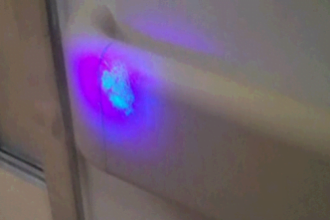Today’s Hospitalist (Ready to let patients hit the panic button?) describes the experience of St. Joseph’s Hospital in Orange, CA, which has implemented a “Condition H” (as in “Help”) system that allows patients and family members to activate the hospital’s rapid response team on their own as a last resort. Staff were concerned it would be overused for non-emergencies and by chronic complainers, but if anything there has been too little use.
Today’s Hospitalist (Ready to let patients hit the panic button?) describes the experience of St. Joseph’s Hospital in Orange, CA, which has implemented a “Condition H” (as in “Help”) system that allows patients and family members to activate the hospital’s rapid response team on their own as a last resort. Staff were concerned it would be overused for non-emergencies and by chronic complainers, but if anything there has been too little use. After three years, there have only been 70 Condition H calls at the 525 bed center. That equates to less than two per month for the whole hospital, or one call per bed every 22 years!
It’s a little hard to understand from the article why utilization is so low. The system has been well publicized, with posters in the halls, info in all admission packets, promotion on the hospital TV station and bilingual flyers in every room. And among the 70 calls are examples that seem to prove the relevance of the system: patients unable to reconcile conflicting advice from different clinicians, people who aren’t satisfied with their pain control, and others wondering about unexplained delays in care or testing. Those are all issues that come up frequently in hospitals, so to give the benefit of the doubt perhaps nurses and other staff are doing a great job responding to these issues and Condition H just isn’t needed. Or maybe just the existence of Condition H causes staff to be more responsive.
But it also seems that part of the challenge could be staff attitudes and vibes they give off about patients who use the system:
But patients and families aren’t the only ones who need regular education about the program. Ms. Bogert says that doctors, nurses and other providers have to learn that their concept of a crisis or emergency may not be the same as a patient’s. Nurses need to be reassured, for instance, that a patient’s call is not a direct criticism of them.
“Working in health care, our emergency factor is really high because we see so much,” says [program coordinator Soudi Bogert, RN. CCRN]. She reminds staff to respect how patients and families interpret the program. “You have to put yourselves in their shoes. In their eyes, it was an emergency.”
While Condition H team members as well as managers used to think some calls weren’t warranted, “in consistent debriefing, we discuss each event,” Ms. Bogert says. “The team has come to realize that each event is unique, as is each caller.”
The line “nurses need to be reassured, for instance, that a patient’s call is not a direct criticism of them,” caught my eye. I’ll bet plenty of patients are worried about retribution from angry nurses if they reach for Condition H.
I like the concept of Condition H, but the low level of utilization makes me skeptical of its value. If I were a hospital I would think twice before emulating this system.






